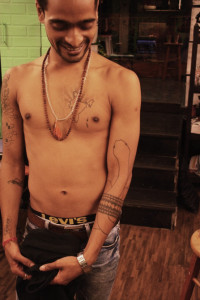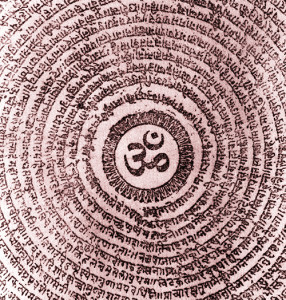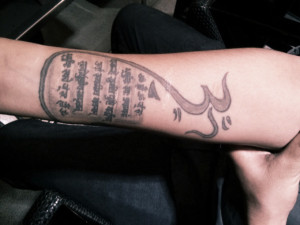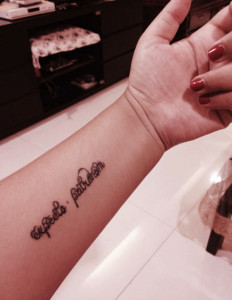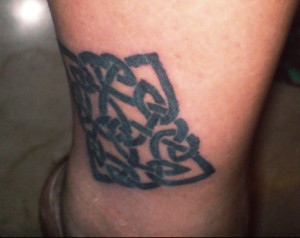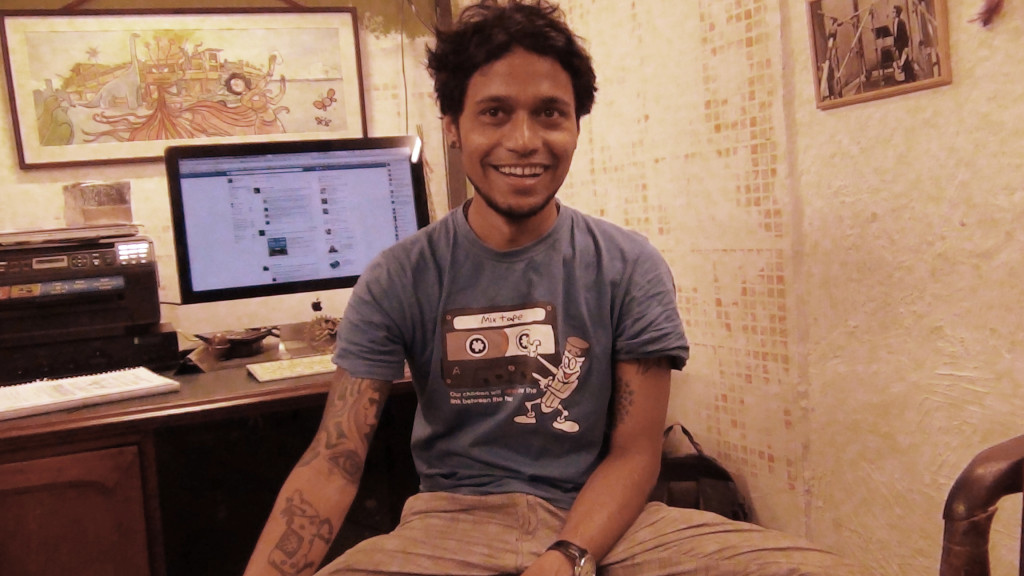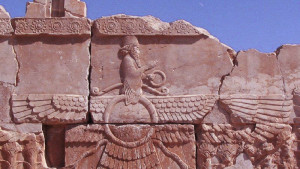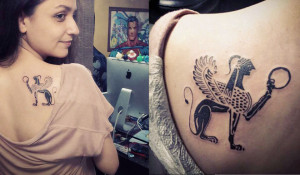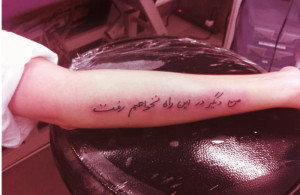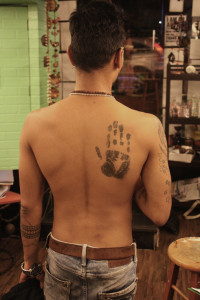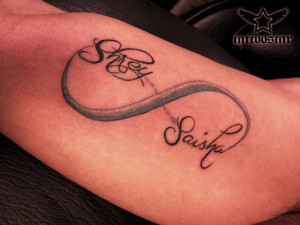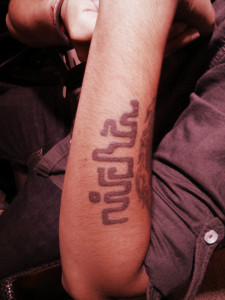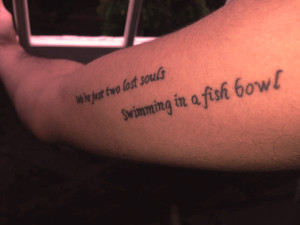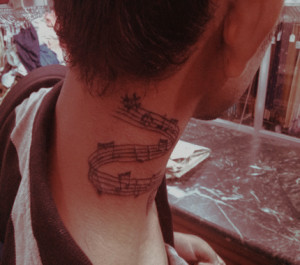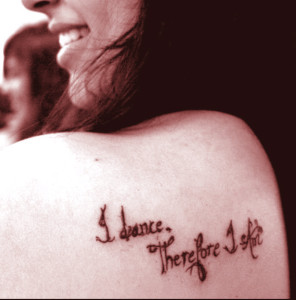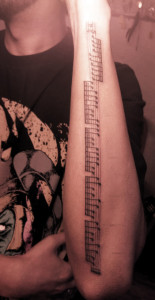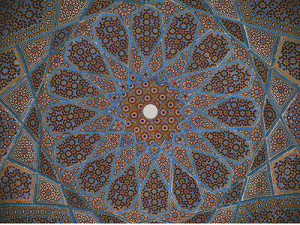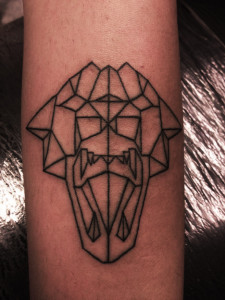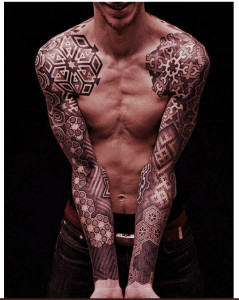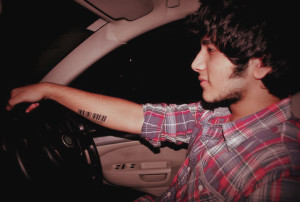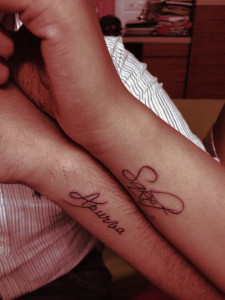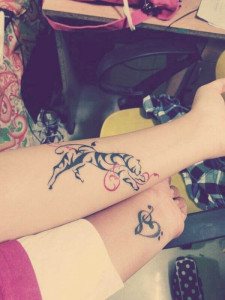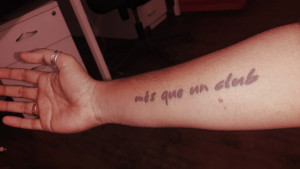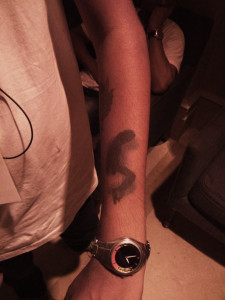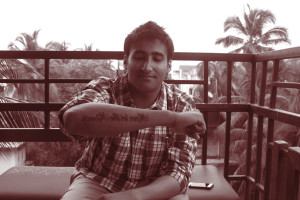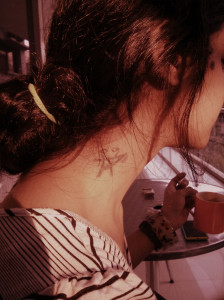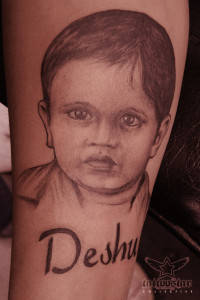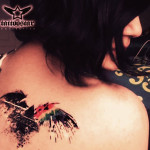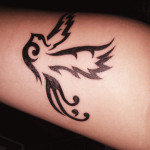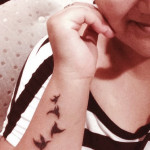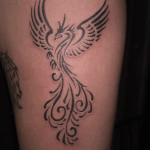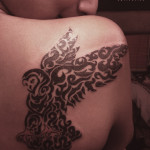There is an underlying ideology with all art forms, which is especially true for tattoo art, that these skin creations represent a fundamental meaning to the individual or group. What lies at the crux of the intensity of expression behind tattoos is that they convey deep meanings. People are visual creatures who construe diverse connotations when observing various arts, many irrational in their interpretation of what they see but nonetheless, true to them.
Perhaps the most interesting aspect of tattoos is the idea of creating lasting memories and to use the body as a photo album and the skin as a canvas. In these times of an abundance of fleeting experiences of many kinds, the idea of choosing experiences and affiliations that we want to create memories for says a lot about how we view identity and image today and what matters to us.
So we set out to meet the youth, the country’s largest cohort, from various parts of India who have gotten inked. They come from various walks of life and belong to diverse groups and communities. Secondly, we met tattoo artists who are giving new meaning to tattoos and are constantly experimenting with new ideas and art forms. Further, we analysed the symbols that were uncovered during our research to outline the themes that are reflected in popular tattoos today.
Indelible Faith
The Hindu god of destruction and death, Shiva is one of the most popular tattoos amongst the youth. The ultimate symbol of masculinity, Shiv’s might and omnipotence is a powerful myth of Hindu culture. Being someone who smoked pot, got high and danced as well as being the prime deity of death cults like the Aghors, Shiv and his symbols of the Lingham and King Cobra appear time and again.
Another related symbol is the chant of Om. It is a ‘bija’ or the ‘seed’ mantra and is the audible expression of the transcendental, un attributable ground of reality.
Ankit prays every day with his mother in the morning and when he eventually decided to get his first tattoo, he knew it had to be Om along with the prayer encapsulated.
While traditionally this might not fall into the idea of faith or religion, since ancient times, Charms have been the symbol that wards off evil spirits. The ‘Expecto Patronum’ charm from Harry Potter and the Celtic cross that we came across represented this belief.
The 28 year old who sported these thought that Expecto Patronum was a phrase that would help fight her inner demons to always feel positive about the world. Tattoos proved yet again that they continue to draw from their powerful original purpose and meanings as totems that help keep evil and misfortune away.
Home away from home.
“And this prayer of the singer,
Continually expanding
Became a cow that was there before
The beginning of the world.”
~Rig Veda
The cow is one of India’s most sacred totems. Swapnil got a tattoo of a cow because his parents have a cow-shed ‘back home’. He finds some things fascinating about them, like how the quality of the milk changes when someone in the family is unwell. The cow to him, represents all that is holy and care-giving about family.
“For I shall never walk this way again…”
– Omar Khayyam, Persian philosopher
For the exiled Parsee’s of India, the symbols, rituals and literature of their people becomes a dominating part of their identity. Worn proudly on their bodies as symbols which signify both tribal allegiances, as well as a form of remembrance.
In Roshni’s case, it was the poems that her grandmother would read out to her at night (arm). The figure on the back is her own design and interpretation of a mythical Persian symbol, a lion with the sun in its hands.
Harshad lives away from home. And he rarely gets to visit. When he was young he was a very naughty boy and so his father would hit him every time he messed up majorly. He didn’t resent it, that is what you get for disobedience.
But now, as an adult, he misses that guiding hand. And so he decided to get a tattoo, which was an imprint of his father’s hand. And where else than on his shoulder blade. He took the imprint on paper, scanned it and then got a talented artist to get the shading right over hours of work and pain.
He cannot see the tattoo himself, nor do most people even know it exists, but to him it is internal. Always there, always reminding him of his father. And home.
Defying transience
More has been said about the emotion of love than anything else in the world. And so it is not surprising to find many echoes of this in the lives of the youth and how they deal with the emotion. The tattoos about love were discovered in many forms – the pledge, to prove the intensity of the feeling and symbols that prove permanence and weave the name in. The most interesting stories are the ones which play on a paradox: very visible, but designed in a way that the moral police and authority will find it hard to prove what the tattoo is about.
Nisha, the girlfriend. Ankit lives with his parents and doesn’t like disoberying them so he got Nisha written in a way that is only deciphered by him.
“How I wish, how I wish you were here.
We’re just two lost souls
Swimming in a fish bowl,
Year after year,
Running over the same old ground.
What have we found?
The same old fears.
Wish you were here.”
Akshay Gadiya, a 19-year old from Chennai got a tattoo to encapsulate the relationship he had with his ex-girlfriend. Couple of months after his break up, Akshay was a very depressed soul. One fine morning, he decided that he wanted to get a tattoo. It means a lot to him but he doesn’t know how to put it in words or talk about it.
Another popular idea within this theme is the magic mirror, or portal that allows us to see the true reflection of someone – the soul, the person inside, sometimes another world, other imaginations.
All of these ideas are held within the many examples of tattoos that reflect a person’s deepest passions. What defines that person, what makes them beautiful or special and the stories it tells about them. Suhas, lives in the slums of Khar and works for that amorphous entity – the ‘software company’. By night, he plays a 19 string instrument which look like a banjo at Marathi weddings and sings popular Qawwali songs. His tattoo artist friends (sprouting up in most slums), told him that he had to get a tattoo. His only request was that it had to be about music. They looked for ideas on the internet and decided on ‘musical notations’. It was a painful process as it was on the neck but he does not regret it. His tattoo always catches the fancy of people who always question him about the meaning of the tattoo and why he got it.
Crafting uniqueness
The tattoo artist of India is a creator and influencer of modern Indian culture. He is helping people discover new ways of expressing themselves and being. People actively seek his opinion or advice when ‘shopping’ for tattoos.
The latest trend in tattoo art is the idea of geometric patterns, moving it from the confines of being a ‘representation’, to being a form that exists, for its own sake. It is finding echoes in how non-representational art forms use the beauty of geometry, like in Islamic architecture.
Another more modern almost technological representation of uniqueness was the barcode. It has become the symbol of modern day free market society – representing the idea of the individual as a product with a shelf-life. It is the ‘digital-ness’ of the tattoo which attracts young post-Millennials.
Manaav, 19yrs, Chennai said that his was very spontaneous. The numbers below the barcode stand for the birthdays of his family. Mom, dad, brother and himself.
Negotiating Rebellion
A quintessentially Asian concept, the ‘arranged-love marriage’ is a beautiful example of the new cultures that emerge when old values meet new ones.
This is the story of Apurva, from a conservative Jain household which frowns on unchaperoned interactions with the opposite sex for young unmarried girls. She was sent Saket’s photo and bio-date through a marriage potal site. He came highly recommended by the family (who looked for common backgrounds and prospects. She had been waiting for the One True Love, but was never going to be allowed to fully make her own decisions about whom to marry. But she refused to just jump into things. She flew to Delhi to meet Saket, spend some time with him, with the sanction of the families. On spending time, something clicked. And they decided over the course of many nights just talking on the phone that this felt special. They agreed to the marriage. One day soon after, without telling anyone, they went and got each other’s names tattooed. The tattoos symbolise everything love should be, to Apruva.
For Sejaswini Bala from Chennia, her tattoo was a silent protest. She believes that where her friends like to get sensuous tattoos like hearts and music notes, she wanted something that was not feminine, or passive at all. She looked for and finally settled on the warrior tiger, a symbol of masculine power, domination and beauty.
This was almost a comment on the stereotypical imagery associated with women in the nation today, the clash of gender norms and the fight for freedom and safety that most women endure.
Consecrating Kinship
People, groups, events can have a deep-rooted impact on our lives. When this happens, the connection becomes so irreversible that it begins to influence our beliefs, ambitions and worldview.
Anish Kotian sports a Barcelona FC tattoo. He says, “My girlfriend (now my wife) gifted me this. I have been a Barca supporter since 1999. During that time, Barca was not as big as it is now. They were the underdogs to Real Madrid but played some beautiful football. They were always challenging Madrid in La Liga and losing out in the Champions League. But when they won, they played some beautiful football.”
The club has always stood for a cause bigger than just football, hence the line ‘Mes que un club’ which means ‘More than a club’. To Anish, it signifies the purity of his love for the game and his favourite club.
Anish says, “Its my support to everyone who wants to achieve more. Stand for something bigger and more noble than just being defined by your roles in daily life. This is how the original typeface is and I have just replicated it.”
Rishab Oberoi and Kashiv Sapte on the other hand pledged their allegiance to Michael Jackson with a tattoo, making their fan ship permanent.
For Kashiv, “I got this tattoo when MJ died. I was training to be a choreographer, but when he died, something died with me. This tattoo, with its deep shading was very painful, but I wanted it. I never danced professionally again.”
For Rishab, Michael Jackson shaped his teen years. “He was the one common thing between my constant juggling between America and India. One of his songs has the line: ‘If you want to make the world a better place, take a look at yourself, and then make a change. I’m starting with the man in the mirror’. I wanted to be able to see it every morning when I brushed my teeth. “
The deepest form of kinship usually comes from family. Family in India is driven by a sense of rootedness, a sense of giving back, of acknowledgement and respect.
Family tattoos are popular amongst the youth of India. Not hidden, not subversive, but re-einforcing the ties and bonds that already exist for all to see. For the middle classes, they are actual portraits of family photos, children, grandparents. For the more educated and affluent, they are unique designs, which are part adornment, part affiliation.
Discovering Sexuality
Interestingly, tattoos are a very gendered symbol. For men, it captures an idea of power or almost becomes a source of more power. For women, it is a sign of times, capturing an idea of freedom through rebirth and flight.
A symbol of ‘mardangi’, and martial spirit, the Lords of the Jungle appear time and again on the shoulder and arms of young men today.
For Ajit Ranchi, it was simply inspired by his star sign. He says, “I am a Leo cusp and I love the symbol of the lion”. On the other hand, for Hanoze Tarapore, it is a symbol of strength – “the tribal lion represents latent aggression, the Chinese symbols mean – inner strength/resilience”
With women, a recurring theme is the idea of flight/re-birth. The phoenix is a popular symbol of the idea of something that is reborn from ashes and to women, it is both beautiful, as well as a mythical symbol of the experiences that they have learnt from and that makes them stronger, typically heartbreak and loss.
The symbol of birds and butterflies, of all shapes and forms, literal and fantastical, in mid-flight, to them capture the idea of perennial freedom and joy, something that is an ideal.
